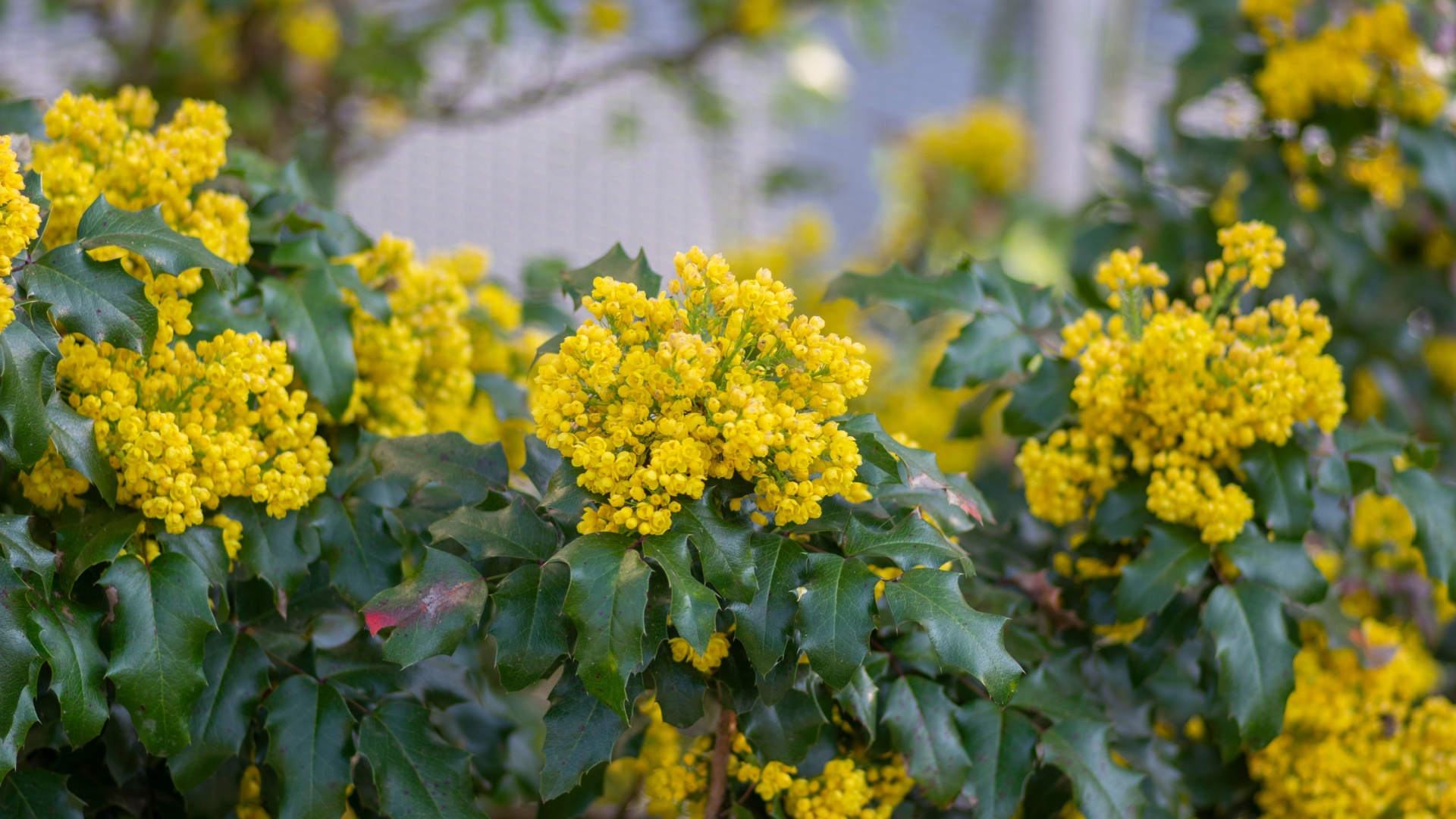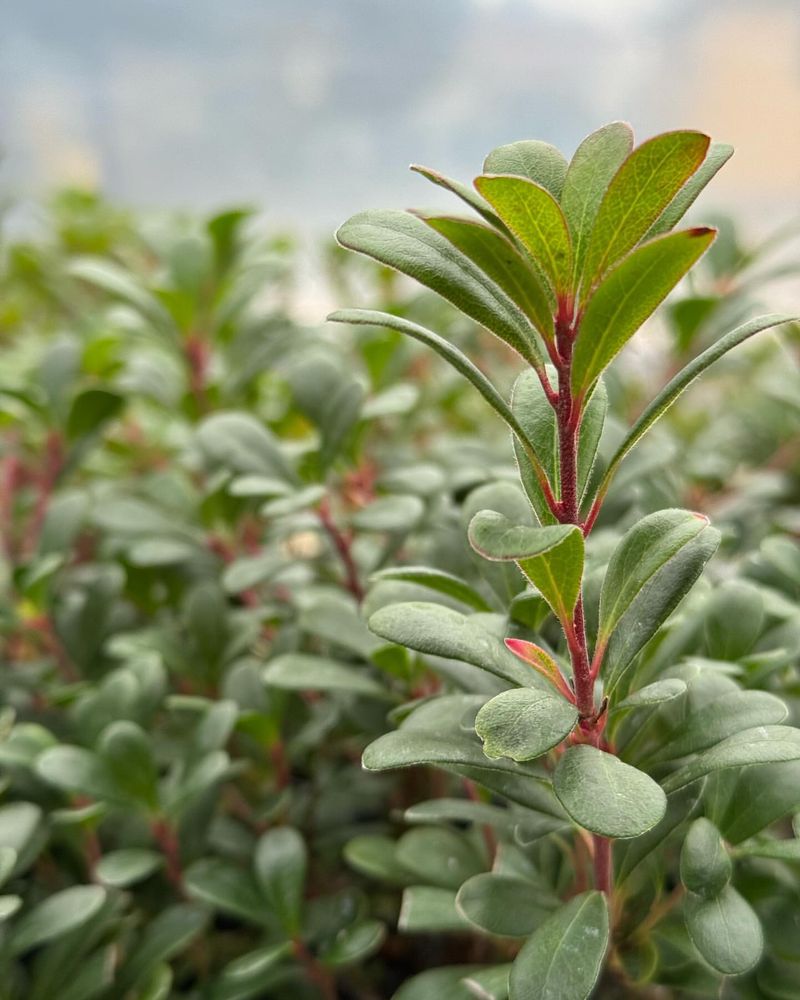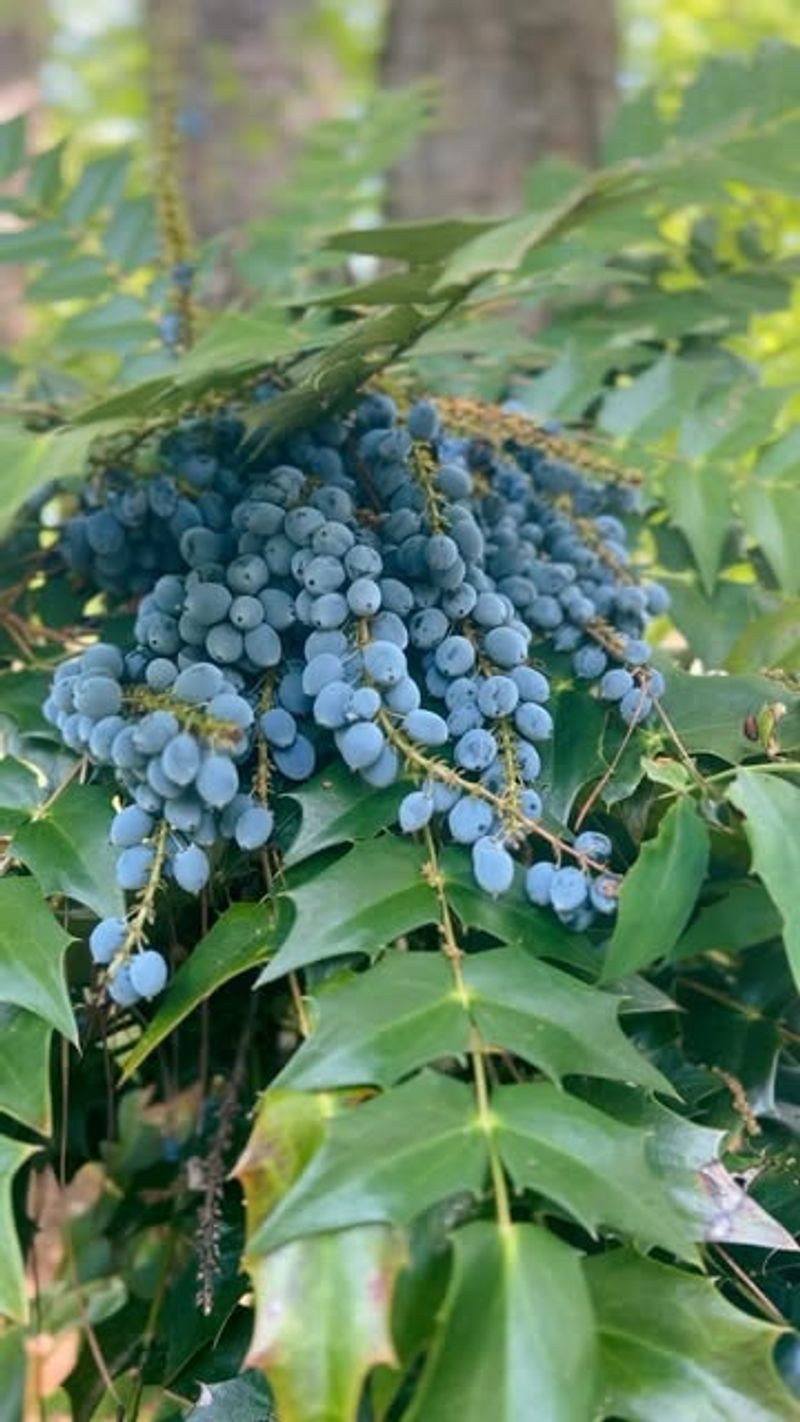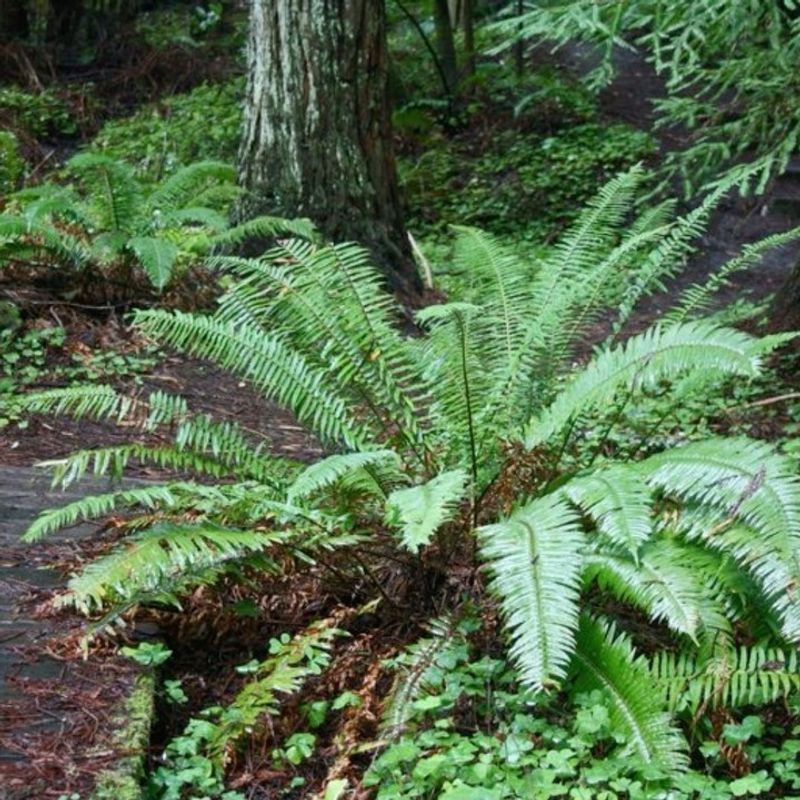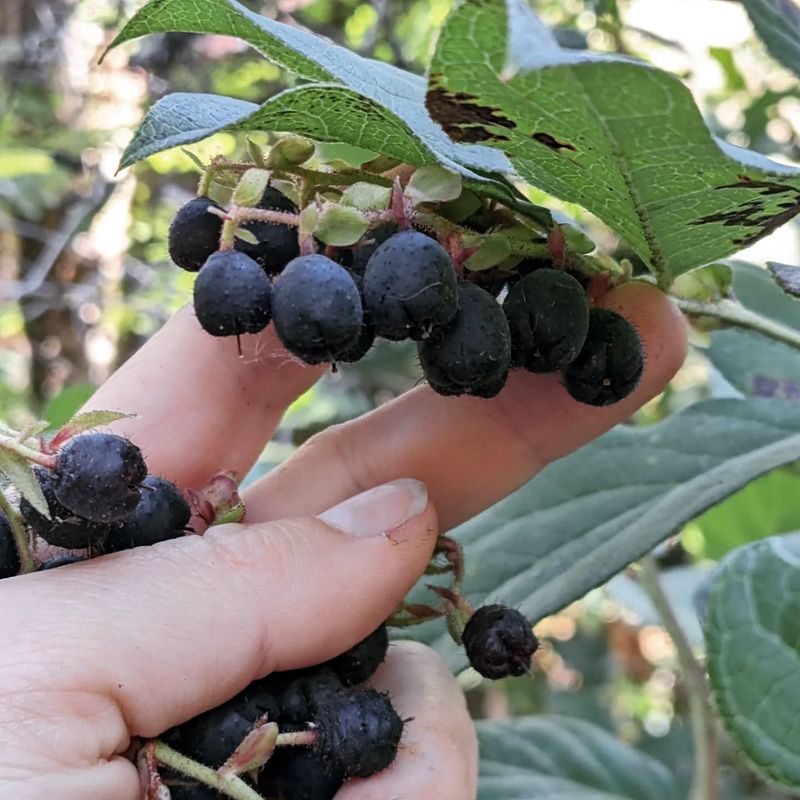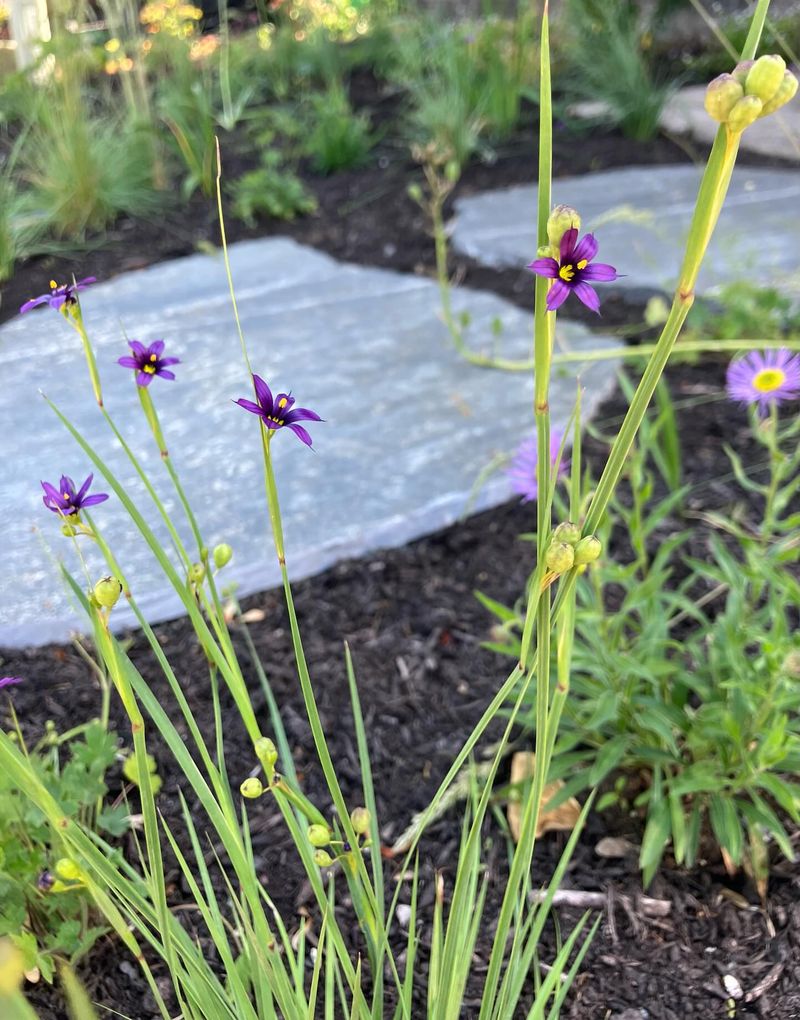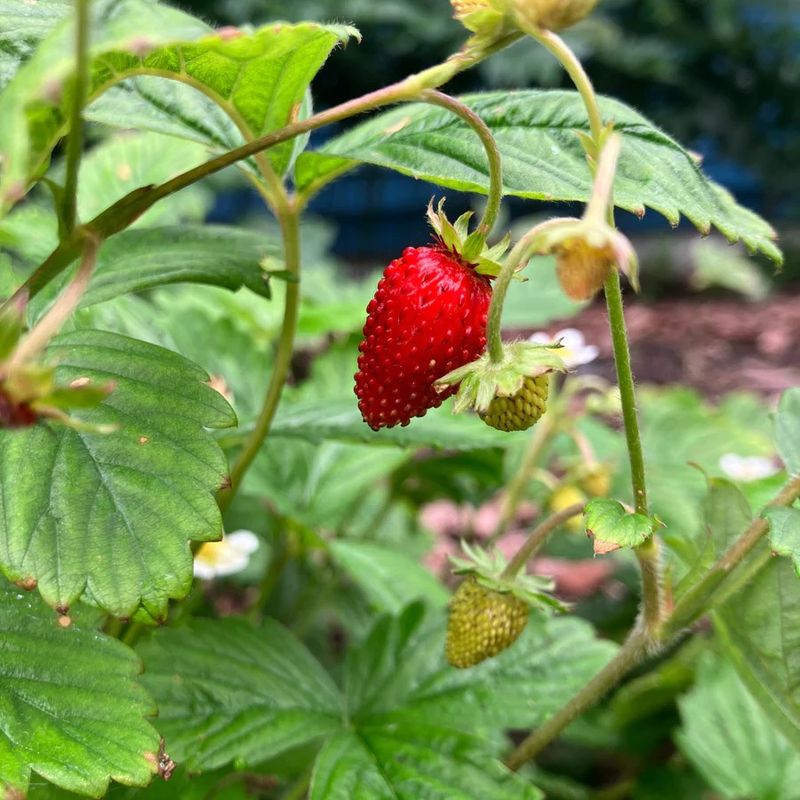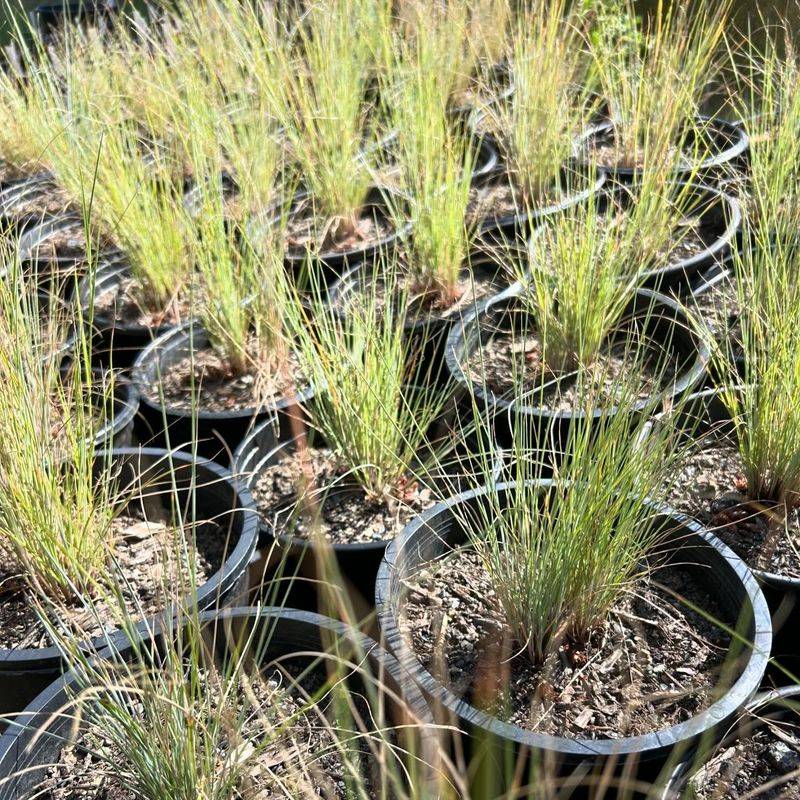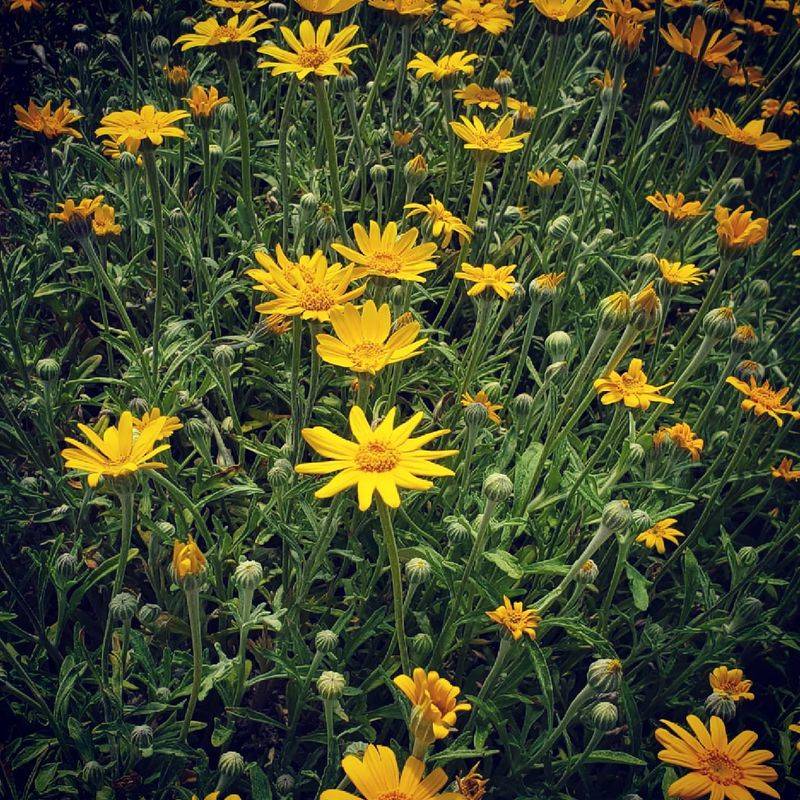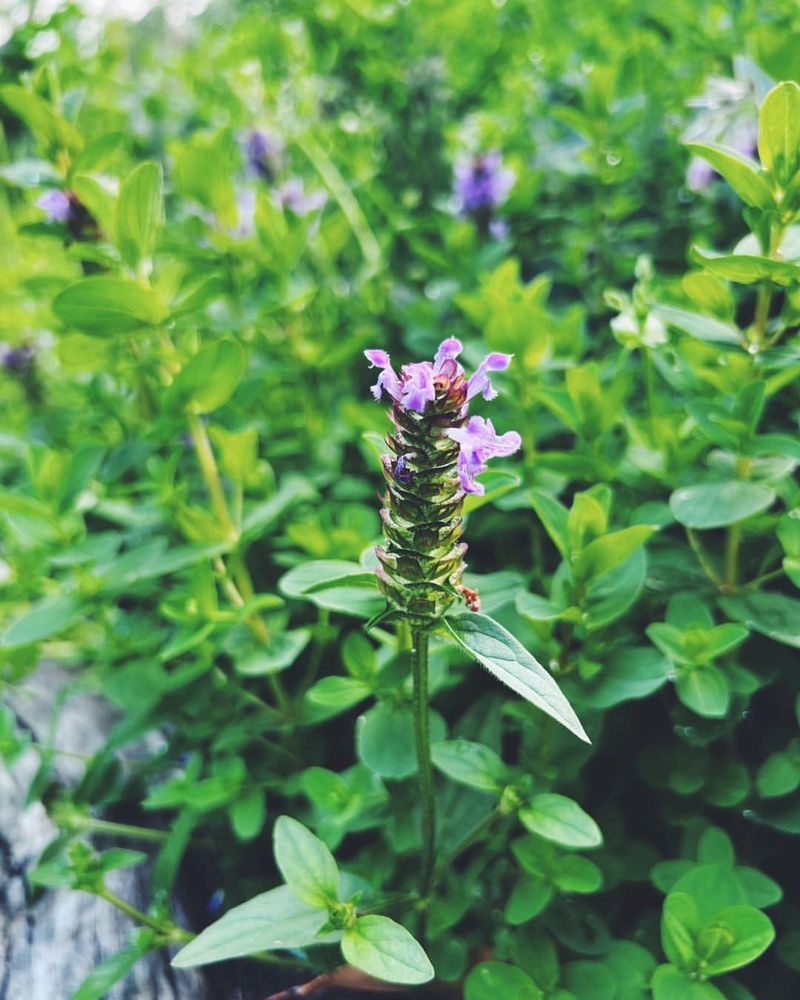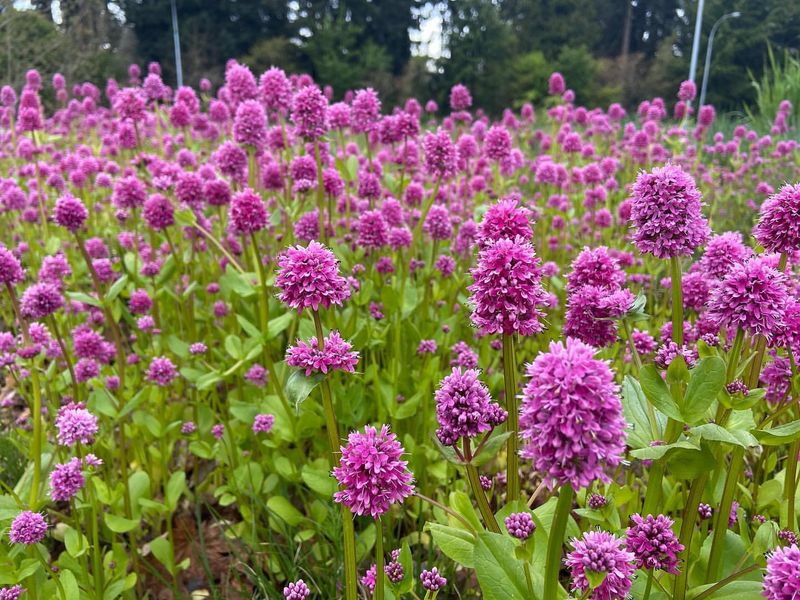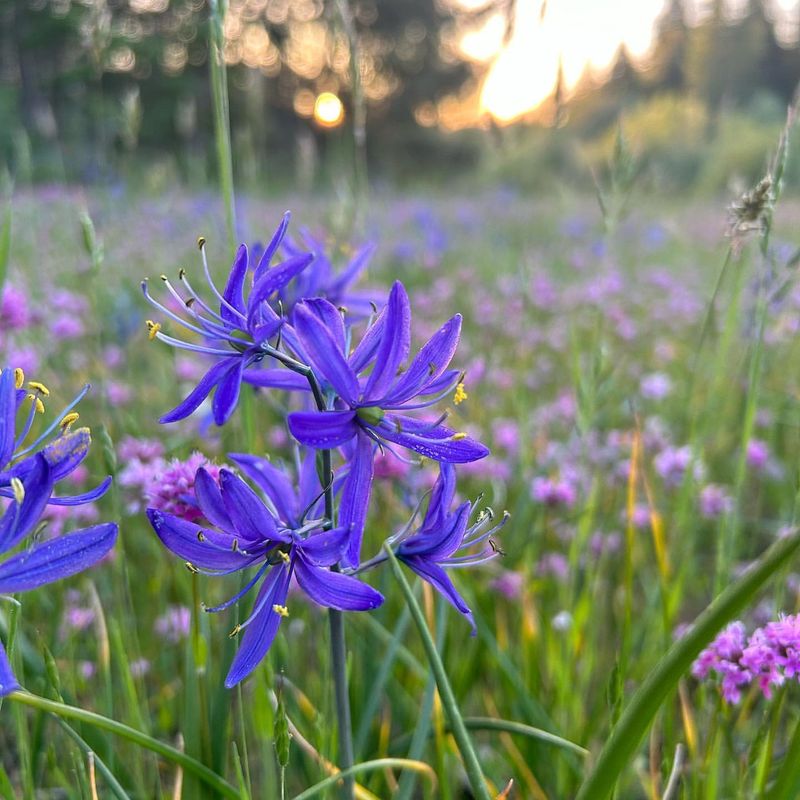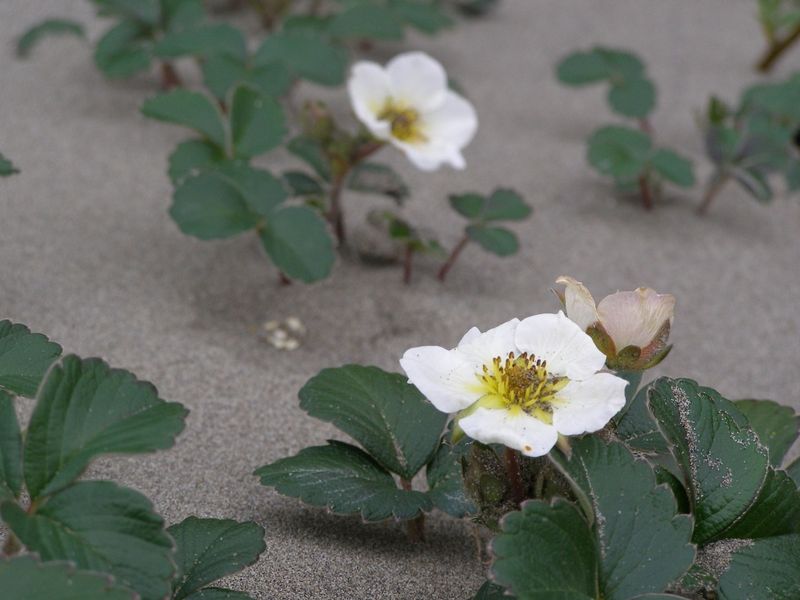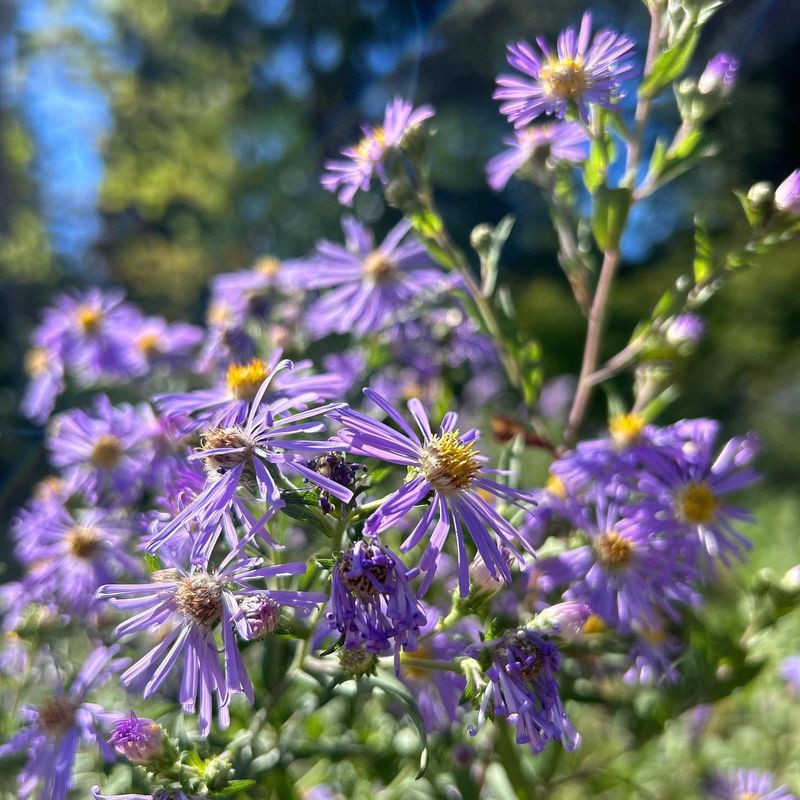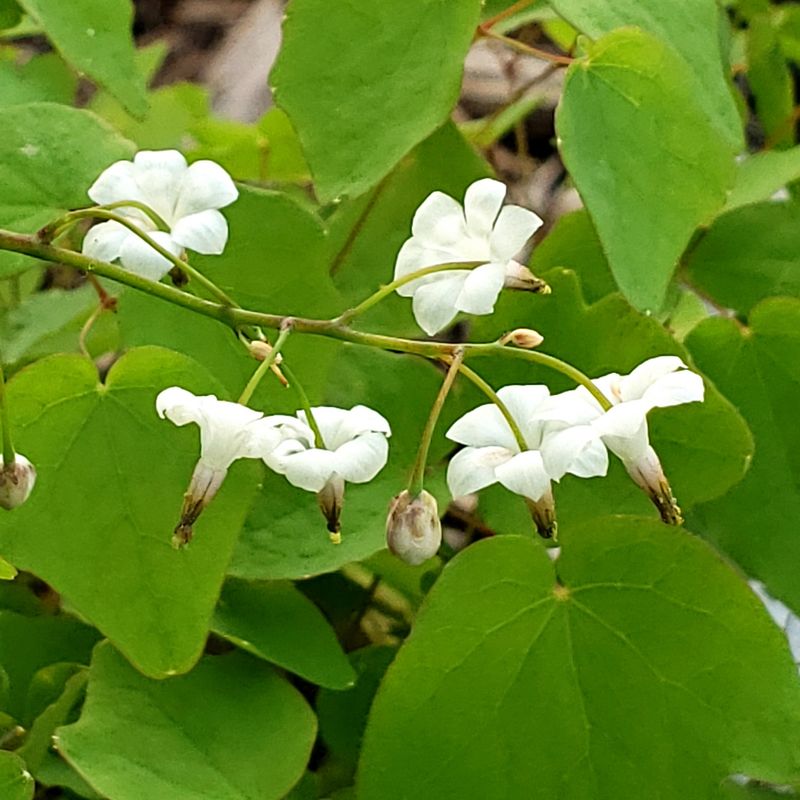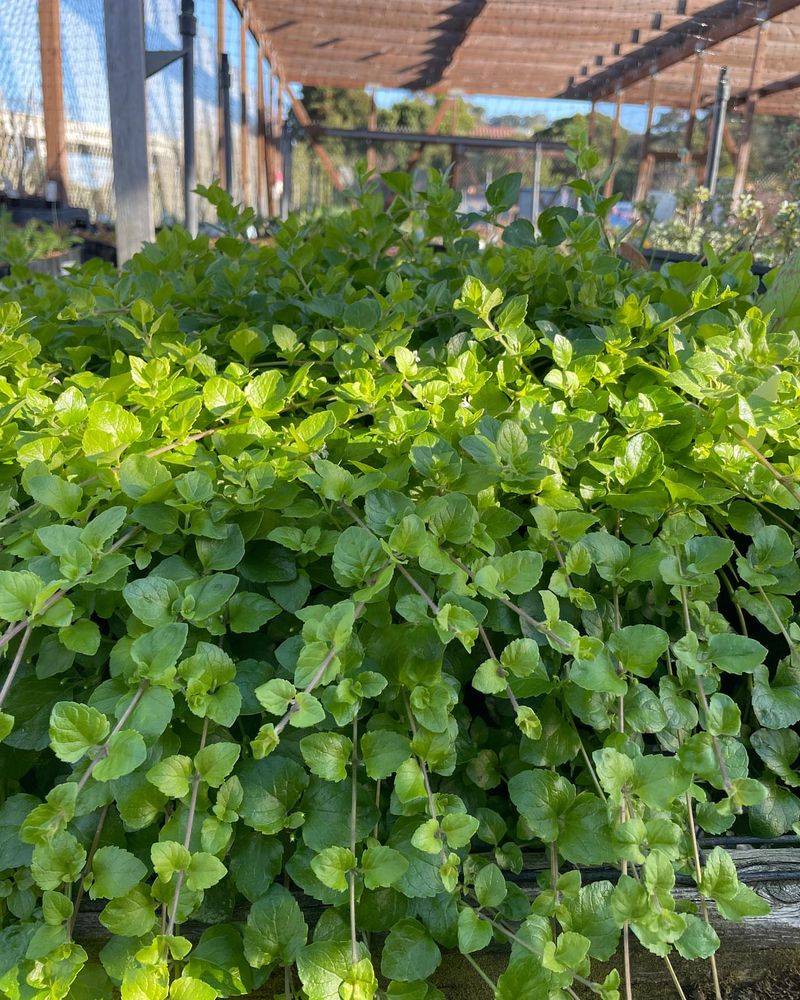Battling weeds in Oregon gardens can feel like a never-ending struggle. Native perennials offer a smart solution by naturally crowding out unwanted plants while supporting local ecosystems.
These tough, beautiful plants have evolved to thrive in Oregon’s unique climate conditions, making them perfect allies in the war against weeds.
1. Kinnikinnick (Arctostaphylos uva-ursi)
Low-growing and tough as nails, Kinnikinnick creates a dense mat that smothers weeds before they can establish. Its leathery evergreen leaves stay attractive year-round, while spring brings delicate pink flowers that transform into bright red berries.
Wildlife lovers appreciate how this groundcover attracts pollinators and provides food for birds. Once established, it requires almost no maintenance and thrives in poor soil where other plants struggle.
2. Oregon Grape (Mahonia aquifolium)
Our state flower packs a powerful punch against weeds! Oregon Grape’s spreading roots and dense growth habit create natural barriers that keep unwanted plants at bay. Bright yellow blooms appear in early spring, followed by blue-purple berries that resemble tiny grapes.
Growing up to 6 feet tall in ideal conditions, this handsome shrub offers year-round interest with its holly-like leaves that turn reddish in winter. Pollinators flock to its fragrant flowers while birds feast on the berries.
3. Sword Fern (Polystichum munitum)
Sword Fern’s secret weapon lies in its extensive root system that crowds out competing weeds. Graceful fronds emerge in spirals called fiddleheads before unfurling into magnificent 3-foot tall plumes that create dense shade underneath.
Remarkably adaptable, these ferns thrive in Oregon’s shady woodland gardens where many plants struggle. Native Americans once used the roots medicinally and for food during lean times.
Plant them in groups for maximum weed-suppressing power in troublesome shady spots.
4. Salal (Gaultheria shallon)
Salal quietly dominates the understory of Oregon’s coastal forests with a stealthy approach to weed control. Spreading via underground stems, it forms impenetrable thickets that leave little room for invaders.
Waxy, dark green leaves create a glossy backdrop for delicate pink flowers and edible purplish-black berries.
Florists prize Salal’s foliage for arrangements, but gardeners value its incredible shade tolerance and ability to stabilize slopes. Give it room to spread in challenging areas where other plants fail.
5. Blue-Eyed Grass (Sisyrinchium idahoense)
Don’t let the name fool you – this isn’t actually a grass but a charming member of the iris family! Blue-Eyed Grass forms tight clumps that outcompete weeds in sunny meadow gardens.
Star-shaped blue-purple flowers with yellow centers pop against slender, grass-like foliage during spring and early summer. Standing just 4-12 inches tall, this diminutive beauty works wonderfully in rock gardens and border edges.
The compact growth creates a natural mulch layer that suppresses weed seeds while requiring minimal care once established.
6. Western Columbine (Aquilegia formosa)
Hummingbirds zoom toward Western Columbine’s distinctive red and yellow nodding flowers that dance above ferny foliage. Beyond its ornamental charm, this woodland beauty self-seeds readily to fill empty spaces before weeds can take hold.
Growing in neat clumps 1-3 feet tall, columbine’s deep tap roots help it compete effectively against shallow-rooted weeds.
The delicate appearance belies its tough nature – it handles poor soil and partial shade with ease while producing a steady stream of nectar-rich blooms from spring through early summer.
7. Woodland Strawberry (Fragaria vesca)
Sweet tiny berries are just a bonus with this hardworking groundcover. Woodland Strawberry’s rapid runners create a living mulch that smothers weeds while its shallow roots don’t compete with nearby shrubs and trees.
White flowers appear in spring, attracting beneficial insects before developing into intensely flavored miniature strawberries. Unlike their cultivated cousins, these native berries pack tremendous flavor into packages smaller than your pinky fingernail.
Children delight in discovering the tiny treasures hidden among the trifoliate leaves.
8. Roemer’s Fescue (Festuca roemeri)
Roemer’s Fescue brings architectural drama to weed prevention with its fine-textured blue-green foliage forming dense, drought-resistant tussocks. Native to Oregon’s meadows and oak savannas, this bunch grass creates a living barrier that weeds struggle to penetrate.
Delicate seed heads wave gracefully above the foliage in early summer, catching morning light beautifully. The deep root system makes it exceptionally drought-tolerant once established, perfect for low-maintenance areas.
Combine with wildflowers for a meadow effect that needs minimal intervention.
9. Cascade Oregon Sunshine (Eriophyllum lanatum)
Golden daisy-like flowers blanket this woolly-leaved perennial from late spring through summer, creating a sunshine effect even on cloudy Oregon days.
The dense woolly foliage forms a tight mat that naturally suppresses weeds in the driest garden spots. Growing just 1-2 feet tall and wide, Cascade Oregon Sunshine thrives in poor, rocky soil where many weeds can’t establish.
Butterflies and native bees can’t resist the bright blooms, making this an ecological powerhouse. Cut back after flowering to encourage a tidier habit.
10. Self-Heal (Prunella vulgaris)
Medieval herbalists treasured Self-Heal for its medicinal properties, but modern gardeners value its incredible weed-fighting abilities. Forming a low mat of oval leaves topped with purple flower spikes, it quickly colonizes bare soil before unwanted plants can take hold.
Remarkably adaptable to sun or shade, wet or dry conditions, Self-Heal thrives where many plants struggle.
The flowers attract diverse pollinators throughout summer while the spreading habit creates a living mulch. Mow occasionally to keep it looking tidy in lawn alternatives.
11. Sea Blush (Plectritis congesta)
Sea Blush creates a spectacular spring display with clouds of pink flowers that smother emerging weeds in coastal gardens.
This annual reseeds so reliably it behaves like a perennial, filling gaps before summer weeds can establish. Growing just 4-16 inches tall, Sea Blush forms dense colonies in open areas, meadows, and rocky outcrops.
The shallow roots actually improve soil quality over time. Allow plants to set seed before summer dormancy, and they’ll return year after year with minimal effort.
12. Camas (Camassia quamash)
Spectacular blue-purple spires emerge from grassy foliage in spring, creating breathtaking displays in meadows and open woodlands. Camas bulbs multiply underground, gradually forming dense colonies that leave little room for weedy invaders.
Historically vital to indigenous peoples who harvested the starchy bulbs for food, Camas now serves as both a cultural icon and garden performer.
Plant in drifts where soil stays moist in spring but dries in summer. The foliage disappears after blooming, so pair with later-emerging perennials.
13. Beach Strawberry (Fragaria chiloensis)
Coastal gardeners rejoice! Beach Strawberry’s aggressive runners quickly form a dense, weed-suppressing mat even in sandy, poor soil. Larger and more robust than woodland strawberry, this coastal native sports leathery, glossy leaves that stand up to salt spray and harsh conditions.
White flowers appear in spring, followed by small but flavorful berries. Fun fact: This species is actually one parent of our modern hybrid strawberries!
The thick foliage effectively smothers weeds while stabilizing slopes and dunes where erosion threatens.
14. Douglas Aster (Symphyotrichum subspicatum)
Late-season color meets serious weed control with Douglas Aster. Spreading vigorously through underground rhizomes, it creates colonies that effectively crowd out unwanted plants in moist areas.
Lavender-blue daisy-like flowers with yellow centers appear from late summer into fall when many plants have finished blooming. Growing 2-4 feet tall, this robust native attracts butterflies and bees when nectar sources are becoming scarce.
Cut back by half in early summer to encourage bushier growth and prevent flopping. Works beautifully in rain gardens and bioswales.
15. Inside-Out Flower (Vancouveria hexandra)
Woodland gardens have met their perfect weed-suppressing match in Inside-Out Flower. Forming a dense carpet of delicate, maple-like foliage, it spreads slowly but steadily to create a living mulch in deep shade where weeds often struggle anyway.
The common name comes from its unique white flowers that appear to wear their petals on the inside. Growing just 12-18 inches tall, this understory plant combines beautifully with ferns and trilliums.
The semi-evergreen foliage provides year-round interest and continuous weed suppression.
16. Yerba Buena (Clinopodium douglasii)
Minty fragrance wafts up whenever you brush against Yerba Buena, a low-growing groundcover that excels at smothering weeds in partially shaded areas. Small white flowers appear in summer, but the real star is the aromatic foliage that Native Americans used medicinally.
The name literally means “good herb” in Spanish, reflecting its pleasant scent and traditional uses. Spreading by runners, it quickly forms a dense mat that’s perfect between stepping stones or under shrubs.
The shallow roots make it an ideal companion for deeper-rooted plants.

